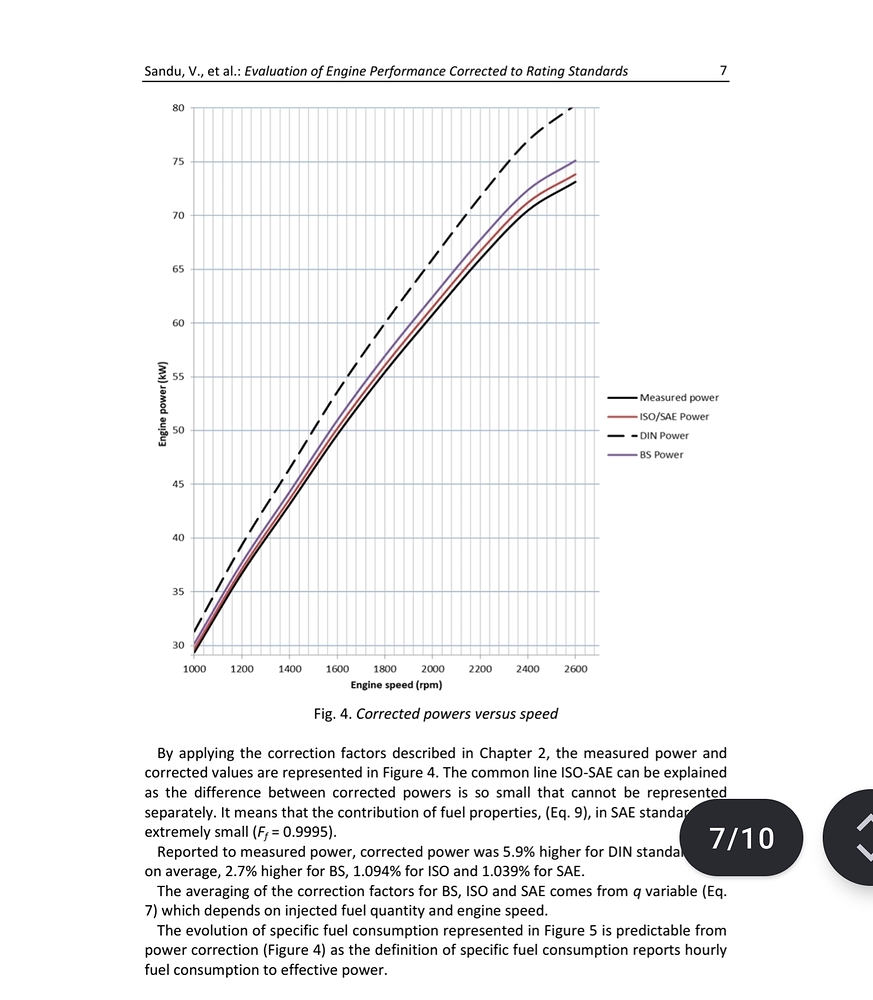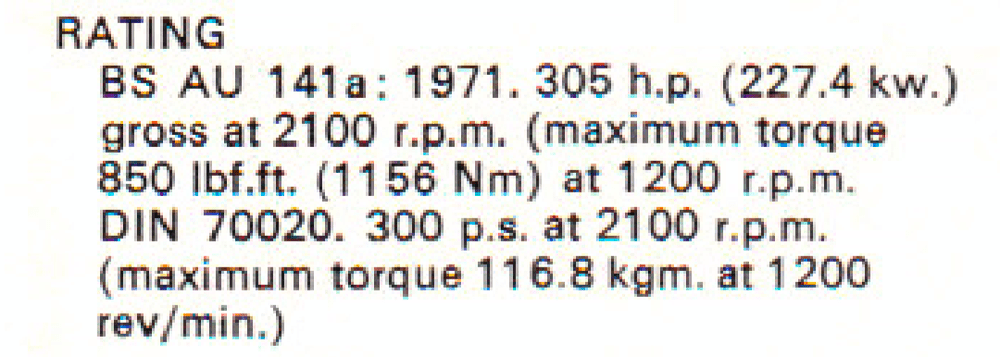what’s the difference in how they’re measured / can the DIN HP be reliably predicted using the BSS number?
You can’t just convert BSS or any of the other pre-ISO engine power standards into DIN 70020, it would depend on what configuration the engine is in and the difference between sustained and peak output (plus conversion to metric horsepower).
We need information on the Rolls-Royce 900E engine.
Example; the CV12 TCA is rated at 1200 hp BSS, and 1296 hp DIN, which converts to 1314 ps @ 2300 rpm (gaujin pls).
The 900E might gain a similar percentage of hp (9.5%, for a total of 985.5 hp), or it might gain a base of 96 hp, or something entirely different. Either way it’s likely to be around or just below the 1000 ps mark when using DIN 70020.
The thing is is there any evidence that gaijin uses the DIN 70020 as standard?, becasue that would make most nations engine power off not just the british engines using BSS
Modern vehicles mostly use DIN 70020, SAE J1349, or some other near-ISO standard. If the BSS value is used even when a DIN 70020 rating is available then that’s a soft nerf for a lot of British equipment, particularly for late Cold War equipment.
Still, sae and iso standard would have lower kw output than when using a din standard, this could be a case of german tanks overperforming due to the higher din rating outputs, you cant just asume that gaijing uses the DIN rating as standard
It’s also worth remembering that some engines have a higher horsepower rating when measured under BS than they do under DIN 70020.
DIN does not always give higher ratings, for example:
So it is a per engine basis, then there is not much of a reason to apply any corrections unless you the specific values for the din rating
This looks like a nice tank for the UK tree.
Yes that is what I meant. In my post I meant that I had heard them called .50 cals before. Probably since they are both HMGs I understand they are different
BSS is the bane of a brit main’s existence
The Chieftain Mk.3 and the Mk.3/3 are different variants.
The Mk.3 had to be modified to be able to carry the LRF, that modification along with changes to the hull to be compatible with a newer engine and some minor changes resulted in the Mk.3/3.
And the new engine is what allowed the tank to achieve 30mph…
The Mk.3 doesn’t have the 720hp of the Mk.3/3 ingame, it has the regular 650hp engine.
Then it shouldn’t have the 30mph top speed.
Look, I don’t know why the Mk.3 has the same top speed as the Mk.5 ingame, but the engine it has according to the x-ray is the old 650hp one and not the 720hp engine the Brits wanted to put into the Mk.3/3
Wish it was the mk3/3
top speed is independent of hp, if its the same transmission and same rpm it’ll have the same top speed
Hey guys. We’ve seen quite a few questions about the decision regarding the armour compared to other vehicles and wanted to provide some more clarity:
We have different implementations of various prototypes in game to suit different needs. The VT-1-2, for example, is entirely made of structural steel. There’s the Object 292, which also isn’t implemented with its possible full protection.
We base each tank to target the right place both in the tree and in BR. The Cheiftan 900 currently fits well alongside the Chieftain 10 and it fulfills its purpose to complement it. One is more protected but slower, the other is faster but less protected.
We chose this rather than pad out the already very well fleshed out 10-11.0 BR British range.
Hopefully that clarified the decision.
thr
I’m very surprised that the Chieftain MK11 wasn’t chosen instead as it gets given thermals and would help fill in that early thermal line for Britain which at the current moment only has light vehicles and the olifant below 10.3


